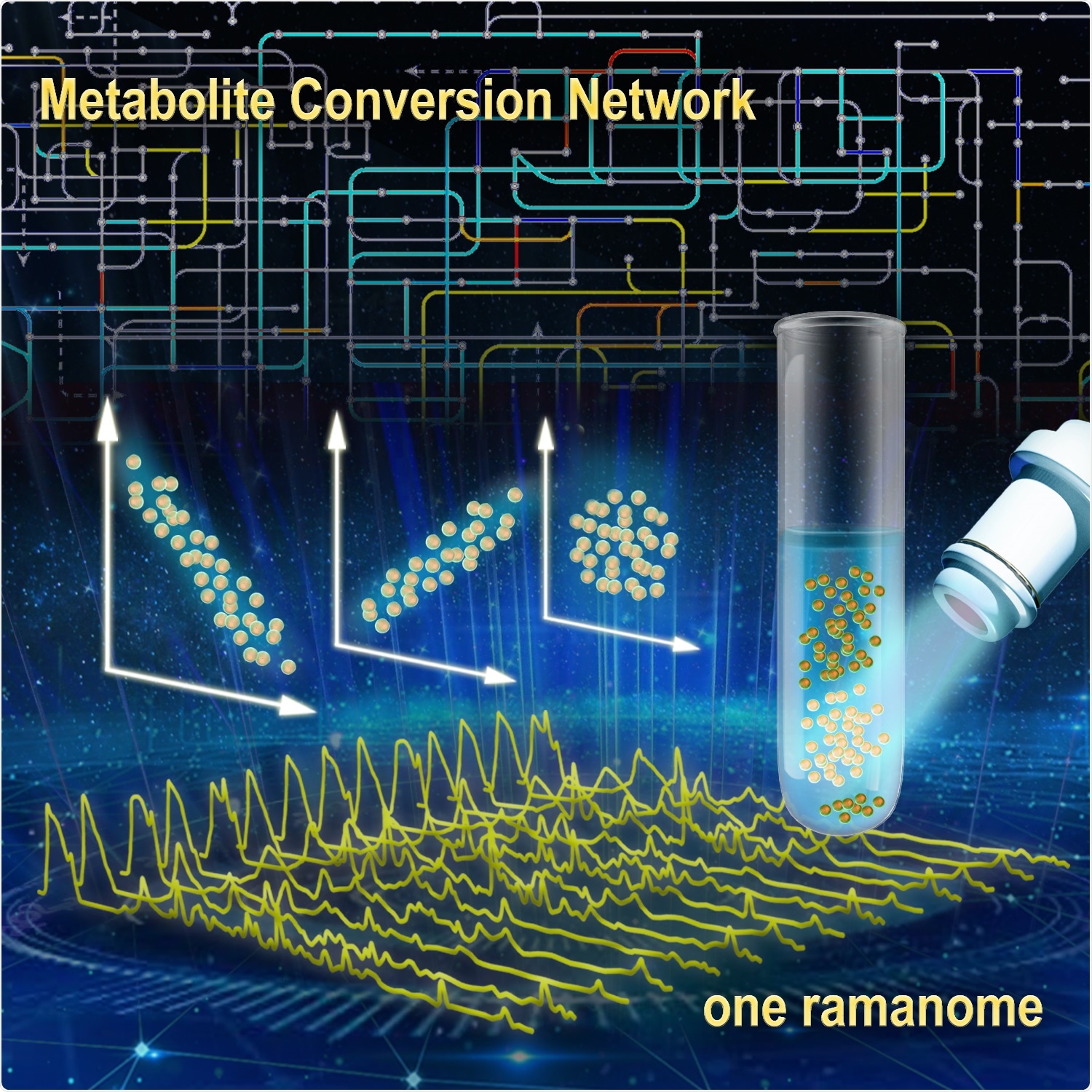A new inexpensive, rapid, and high-throughput technique for profiling dynamic metabolic features using only one isogenic sample of cells has been devised by researchers.

New ramanome technology unveils metabolite conversion network from single cells. Image Credit: Yang Liu.
The breakthrough was achieved by researchers from the Single-Cell Center, Qingdao Institute of Bioenergy and Bioprocess Technology (QIBEBT) of the Chinese Academy of Sciences (CAS). The research was published on August 31st, 2021, in mBio.
Similarly, any group of genetically identical cells could present several different phenotypes. Metabolites can help describe these phenotypes at a much more granular level.
It is highly valuable to identify the correlations between metabolism-related phenotypes. For instance, the discovery of a connection between an abundance of a specific type of metabolite and a specific disease could offer very useful data for diagnostics and other medical applications.
Researchers have been using high-resolution mass spectrometry studies over a “metabolome,” or set of all metabolites, of several datasets to determine the metabolites that characterize a specific disease.
But the strength of such studies usually depends on various samples, where each sample includes a large number of cells. A new technique developed by the QIBEBT team can quantitatively profile different metabolism-related phenotypes using a single snapshot of a single test tube, that is, by treating each cell as one unique “sample.”
Single-cell Raman microspectrometry, which leverages the interaction of light with the chemical bonds, was used by the researchers to enable the metabolic profile of a cell to be identified quickly without modifying or destroying it.
When laser light interacts with metabolite molecules, its drives the energy of the laser photons up or down. This leads to a “landscape” of the thousands of peaks and valleys of photons that are bumped up or down characteristic of specific metabolite molecules produced by the cell, and thus of its metabolic phenotype.
Just like how a portrait can reveal multiple facial features of a human individual, Single-cell Raman Spectra (SCRS) can unveil cellular phenotypes in a landscape-like manner, simultaneously revealing multiple metabolism-related phenotypes of a cell in a particular state.”
Jian Xu, Study Corresponding Author and Professor, Single-Cell Center, Qingdao Institute of Bioenergy and Bioprocess Technology, Chinese Academy of Sciences
The team has named this the “ramanome,” or set of all SCRS sampled randomly from a group of genetically identical cells—a metabolic snapshot of this group at the single-cell resolution.
Then, by exploiting the intrinsic, universally existing difference in metabolic activities among these individual cells, the team postulated and showed the ability to uncover several between-phenotype links.
They typically predicted a network of metabolite inter-conversion using only dozens of cells from a single tube of isogenic cells. They name this investigative framework “Intra-Ramanome Correlation Analysis” (IRCA).
One beauty of IRCA is that, instead of the conventional notion of treating each bottle or colony of cells as one ‘sample’, now each cell becomes one independent ‘sample’, and this creates many incredibly exciting opportunities.”
Dr Yuehui He, Study First Author, Single-Cell Center, Qingdao Institute of Bioenergy and Bioprocess Technology, Chinese Academy of Sciences
Dr. He spearheaded the development of the IRCA algorithm.
Since then, the researchers have applied IRCA over ramanomes of several different species of fungi, bacteria, and microalgae at low cost and with high throughput, thus establishing the universal value of IRCA to the abundance of cell types in nature.
The researchers have demonstrated the theoretical frameworks underlying IRCA and are now looking forward to evidence the technique supporting a wide range of new data-driven scientific endeavors that unravel the hidden dynamic features of cellular metabolism.
Source:
Journal reference:
He, Y., et al. (2021) Intra-Ramanome Correlation Analysis Unveils Metabolite Conversion Network from an Isogenic Population of Cells. mBio. doi.org/10.1128/mBio.01470-21.